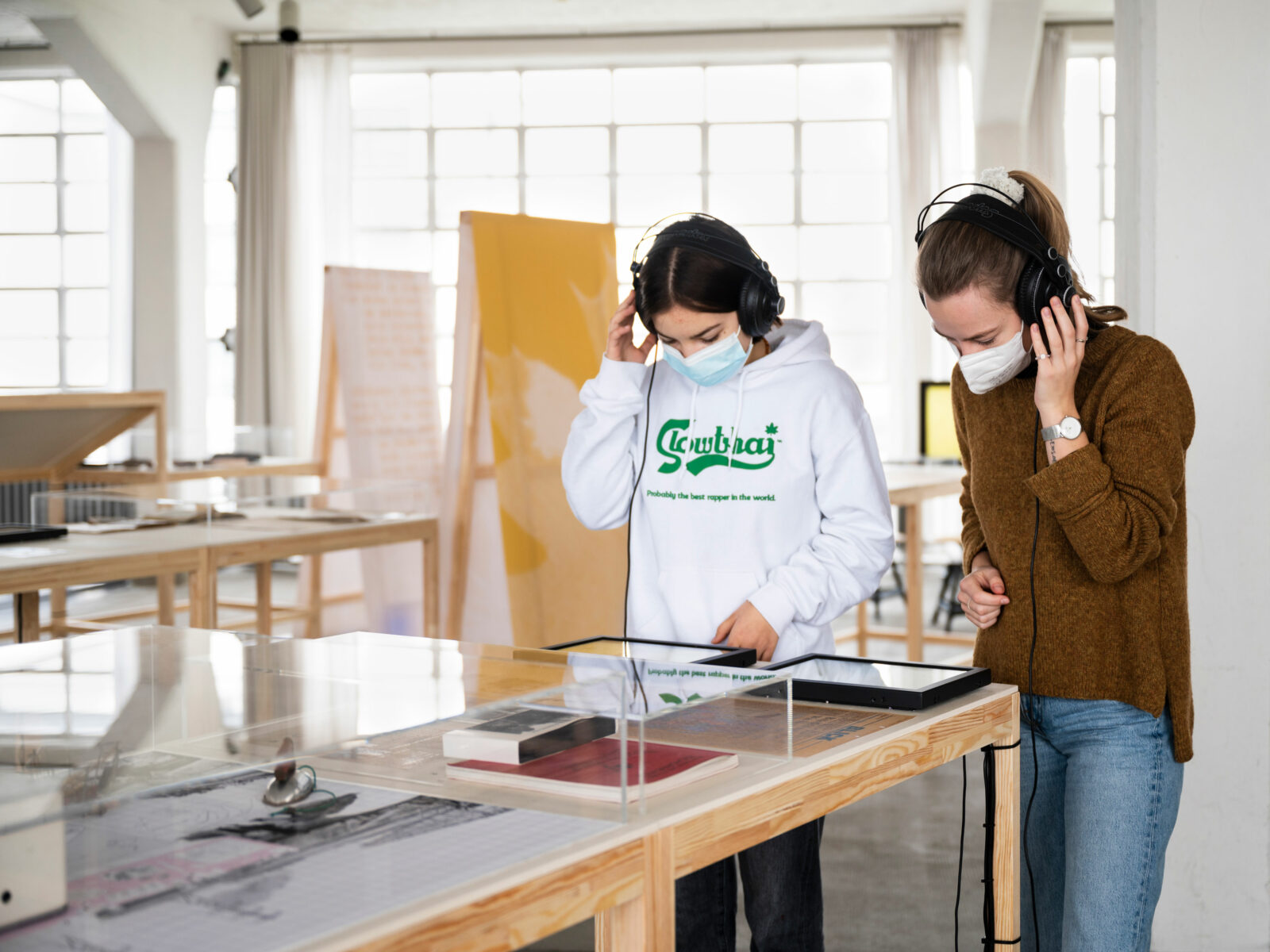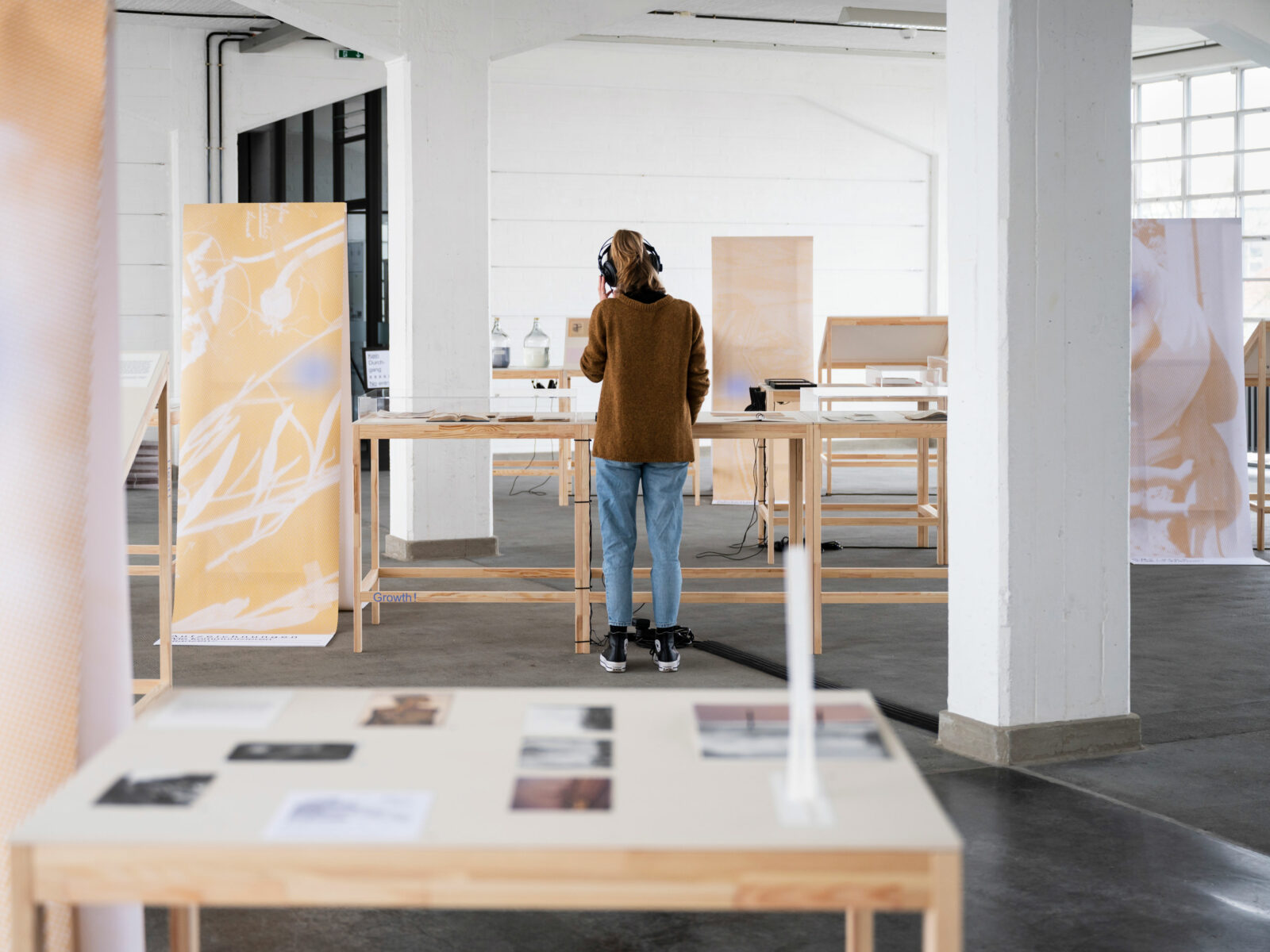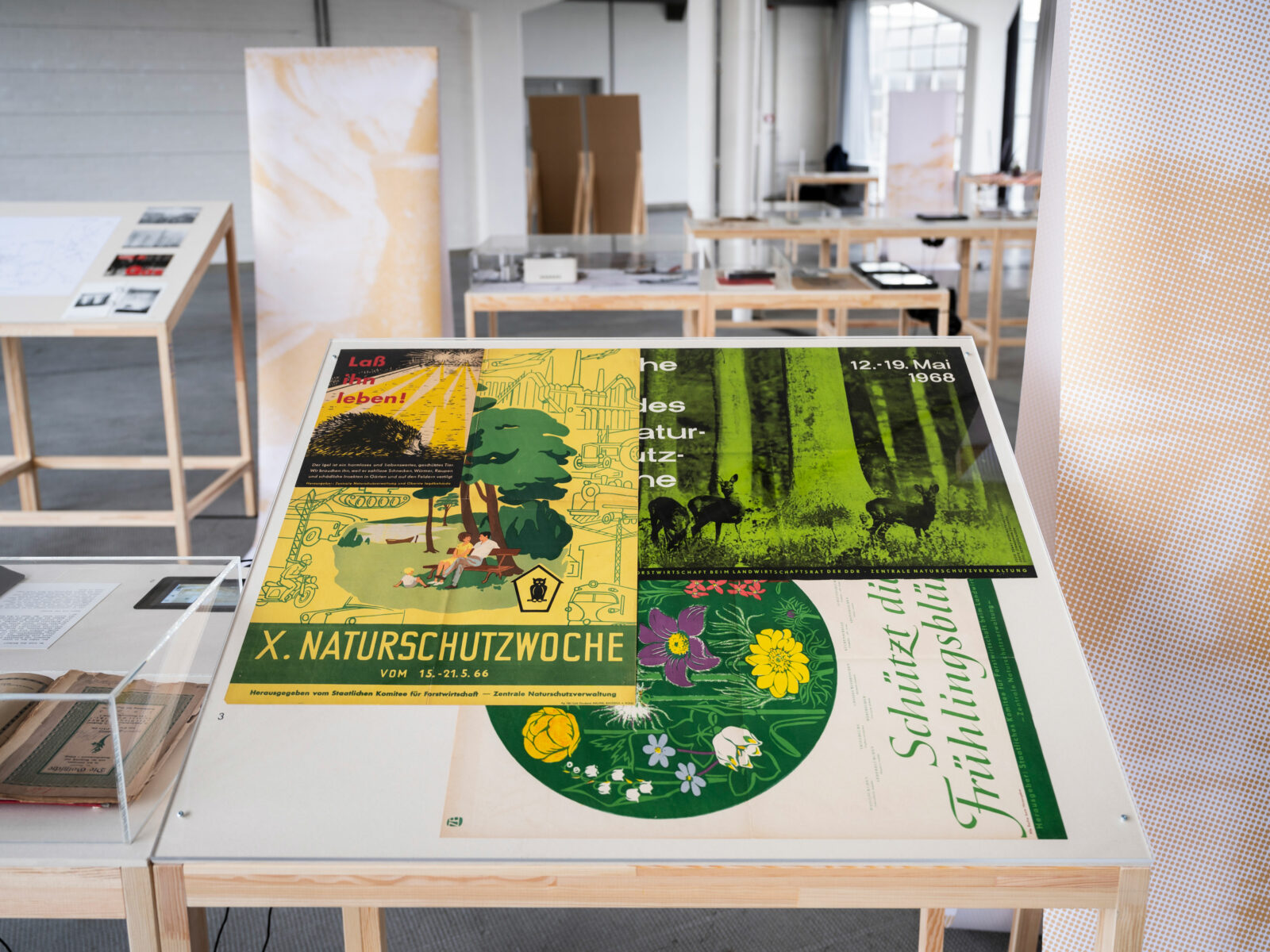Exhibition
10 Dec 2021 – 20 Feb 2022, Bauhaus Building
+ 2 Mar – 24 July 2022, Kreismuseum Bitterfeld
The starting point of the Bauhaus Lab 2021 is a herbarium from 1930. Created by the botanist Hans Weber, the collection includes plants and plant parts from the floodplain forest area of the Goitzsche. The object in the Kreismuseum Bitterfeld bears witness to the effects of environmental pollution in the region at the beginning of the 20th century.
The Bauhaus Building, brightly lit by electric light, fascinated its contemporaries when it opened in 1926. However, no one had in mind the plumes of smoke and defoliated trees that formed the underbelly of electrification. Within a few decades, Central Germany developed into an industrial region that even supplied Berlin with electricity. Today, the Goitzsche is one of the most prominent examples of renaturalised post-mining landscapes in central Germany. So could the herbarium be a testimony to the pollution that has shaped the region since the 19th century?
The exhibition links the plant collection to public debates on forest dieback, nature conservation, air pollution and growing environmental awareness, highlighting the relationship between ecology and economy: vegetation as a basis for energy, but also as a field of resource exploitation in the context of different political regimes.
Using archival documents, interventions and field studies, the transformation of nature is related to the history of the Bauhaus. For the heating of the Bauhaus Building, for example, Walter Gropius argued with the low-cost brown coal in the region.
The dynamic interplay of these facts gives rise to questions about how we care for and preserve landscapes that are seemingly irretrievably lost. What does it mean to care for post-industrial landscapes? And how can we push for the renaturation of our environment today?
Bauhaus Lab 2021: Lili Carr, Maya Errázuriz, Shaiwanti Gupta, Elizabeth Hong, Pierre Klein, Elisabetta Rattalino, Shivani Shedde, Nancy Valladares




Symposium
9 Dez 2021, Bauhaus Building
The participants of the symposium discussed online in English together with international experts. Based on their research in the Kreismuseum Bitterfeld, questions of new nature-culture relationships, the knowledge of herbaria, the politics of the environment and the anthropology of infrastructures were discussed. With Lucia Pietroiusti (London), Michael Marder (Vitoria-Gasteiz) Kenny Cupers (Basel) and Caroline Ektander (Berlin).
The event took place as a hybrid event: Participation was possible either directly on site or online via Zoom.



